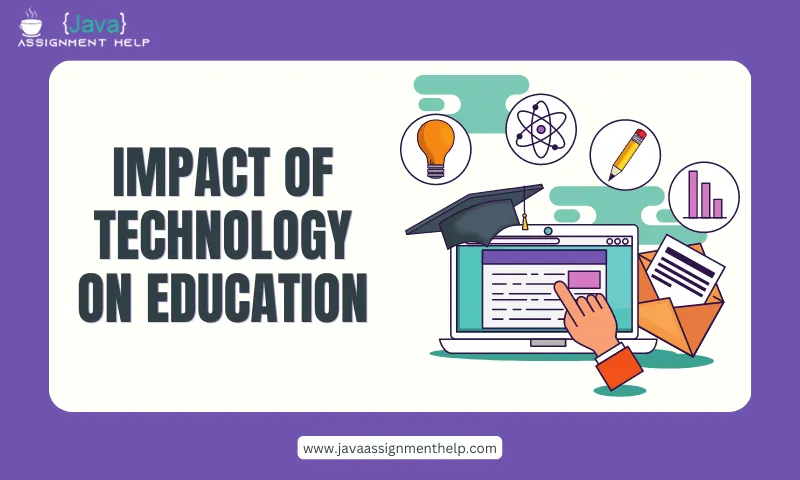Introduction
Technology has revolutionized the way we live, work, and interact with the world around us. In recent years, the education sector has not been left untouched by this wave of innovation. The integration of technology into education has ushered in a new era of learning, making education more accessible, interactive, and adaptable. This transformation has implications for students, educators, and institutions alike. In this blog post, we’ll dive deep into the impact of technology on education and examine the ways in which it’s reshaping the learning landscape.
The Digital Classroom
Online Learning Platforms
The advent of the internet has brought a world of knowledge to our fingertips. Online learning platforms have democratized education, making it possible for people of all ages and backgrounds to access a wide range of courses and educational resources. Whether you’re a high school student looking to brush up on math skills or a professional seeking to acquire new skills, platforms like Coursera, edX, and Khan Academy have made it easier than ever to learn at your own pace.
Online learning has also gained momentum during the COVID-19 pandemic, as schools and universities shifted to virtual classrooms to ensure the safety of students and staff. This shift, while challenging, has highlighted the potential of online education and its ability to provide continuity in the face of disruption.
MOOCs (Massive Open Online Courses)
Massive Open Online Courses, commonly known as MOOCs, have gained popularity as a means of delivering high-quality education to a global audience. MOOCs are often offered by renowned universities and institutions, and they cover a vast array of subjects. These courses are typically free or available at a lower cost than traditional higher education, making them an attractive option for lifelong learners and those seeking to acquire specific skills.
Coursera, for instance, partners with prestigious universities and offers a wide selection of MOOCs that grant certificates upon completion. This innovative approach to education allows learners to build their knowledge and skills without the financial burden of a traditional degree program.
Personalized Learning
Adaptive Learning Platforms
One of the most exciting developments in education technology is the emergence of adaptive learning platforms. These platforms use data and algorithms to tailor educational content to the individual needs of each student. By analyzing a student’s performance and adjusting the difficulty and content of lessons accordingly, adaptive learning ensures that every student can learn at their own pace.
Adaptive learning platforms are a game-changer for educators as well. They can identify struggling students early and provide additional support, helping to reduce dropout rates. The ability to track and analyze student progress also enables educators to refine their teaching methods for improved outcomes.
Augmented Reality and Virtual Reality
Immersive Learning Experiences
Augmented Reality (AR) and Virtual Reality (VR) have opened up new frontiers in education. These technologies offer immersive learning experiences that go beyond traditional textbooks and lectures. With AR and VR, students can explore historical events, conduct virtual science experiments, or even visit far-off places without leaving the classroom.
For example, medical students can practice surgical procedures in a safe virtual environment, reducing the risks associated with early hands-on training. Geography lessons can come to life as students take virtual tours of world landmarks. These technologies engage students in ways that traditional methods cannot, making learning both fun and memorable.
Artificial Intelligence (AI) in Education
Smart Classrooms
Artificial intelligence has found its way into education in the form of smart classrooms. AI-powered systems can help educators automate administrative tasks, such as grading and attendance, freeing up more time for personalized instruction. Additionally, AI can analyze student data to identify learning gaps and offer recommendations for improvement.
Intelligent tutoring systems, powered by AI, provide students with instant feedback and personalized guidance. These systems adapt to individual learning styles and pace, ensuring that each student receives the support they need to succeed.
The Future of Education
The integration of technology into education is not without its challenges. Issues such as the digital divide, data privacy, and the need for teacher training must be addressed for technology to reach its full potential in education. However, the benefits are too significant to ignore. Technology has made education more accessible, engaging, and tailored to individual needs.
As we look to the future, the impact of technology on education will only grow. From AI-driven classrooms to virtual laboratories, the possibilities are vast. The key to a successful education system will be finding the right balance between technology and human interaction.
Conclusion
The impact of technology on education is profound and far-reaching. It has ushered in a new era of learning, making education more accessible and personalized than ever before. From online learning platforms to AI-driven smart classrooms, technology has transformed the way we acquire knowledge.
As we navigate this ever-changing educational landscape, it’s important to stay informed about the latest trends and innovations. By harnessing the power of technology, we can provide a brighter and more promising future for learners of all ages. The integration of technology into education is not a challenge to be feared; it is an opportunity to be embraced.



